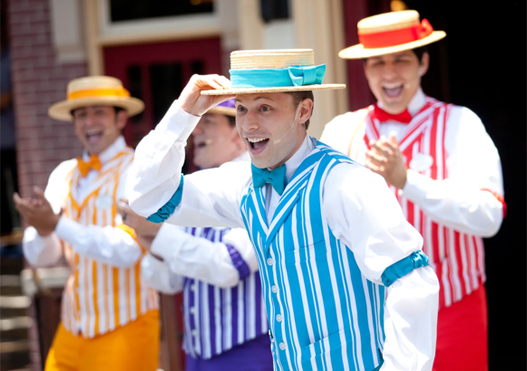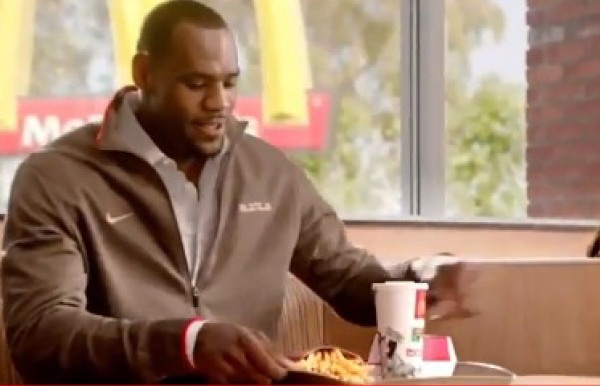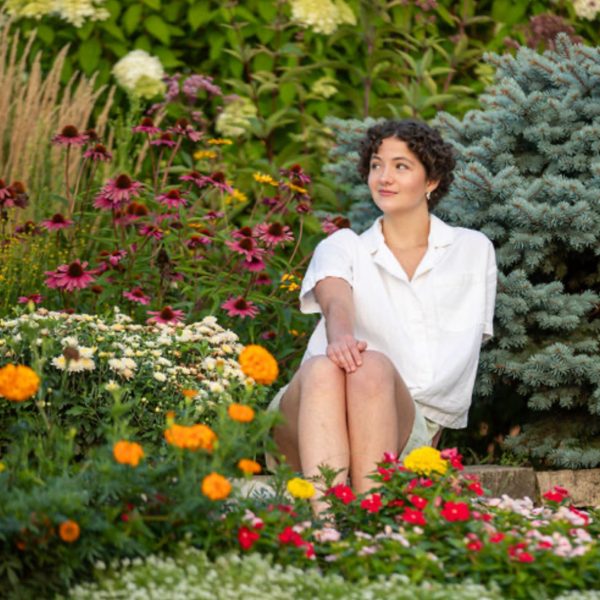Blue Skies, Coney Island, and Mr. Sandman: A History of Barbershop
Barbershop music has long been entwined with community, recreation, and brotherhood. The origins of this uniquely American tradition are complex. Barbershop, just like its country of origin, is a melting pot of several different cultures and influences. To trace its root, you have to step back into the bustling barbershops of 17th century England. Barbershops were not just places to get a haircut or a shave, but a social gathering spot for men, with the barber’s themselves being musicians. Men would often come together for recreational singing and performance. However, they lacked the unique musical style of barbershop we now recognize; With tight harmonies, rhythms, and iconic traits like tags, or a short and dramatic ending to the piece.
The barbershop we know today first began emerging in the late 1800s, not in barbershops, but within African American communities. Excluded from concert halls and performance venues, black men would often congregate to harmonize recreationally, freely improvising harmonies as they went. These sessions gave birth to the idiosyncrasies of barbershop, and many singers involved would later go on to shape jazz music. The uniqueness of the music’s sound, however, made it ripe for parody by white minstrel performers in blackface. These performances incorporated the same distinctive harmonies and stylistic elements, introducing barbershop to mainstream audiences while simultaneously erasing its origins. This “early barbershop” sound became so popular that it was even brought into the professional recording scene. As this happened, some elements of the original barbershop sound were lost due to limits of recording equipment and the existing traditions from white singers. Over time, barbershop came to be thought of as a white only tradition – a stereotype that continues on to this day.
Barbershop thrived in the early 1900s, but its popularity declined in the 1920s as jazz music took center stage. However, it found its revival in the 1940s as performers began adapting show tunes. Groups like The Buffalo Bills even gained Broadway traction performing the iconic chart ‘Lida Rose’ as a part of The Music Man. A modern force of this revival is the Society for Preservation and Encouragement of Barbershop Quartet Singing In America (SPEBSQSA) which was established in 1938 and is still around today – now known as the Barbershop Harmony Society. It began its major revival efforts in the mid-20th century and saw massive success. It now boasts over 800 chapters and 38,000 members. Female barbershop societies have been around almost as long as their male counterparts, and mixed (male/female) barbershop groups have continued to gain traction in recent years. The most prominent women’s barbershop society, the Sweet Adelines, was established in 1945 and has over 1200 quartets spread across 5 continents.
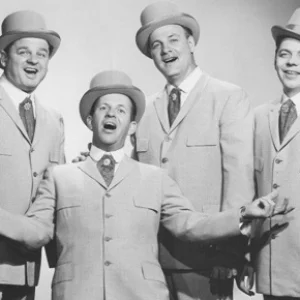
Even as musical tastes change, barbershop has never fully faded. It has instead become woven into modern pop culture, appearing in everything from The Simpsons to South Park to Friends, and even being seen in commercials. Disney World features ‘The Dapper Dans’, a brightly bedecked barbershop quartet who walks Main Street, serenading guests with classic charts. Barbershop even has political ties. President Harry Truman was an avid barbershopper and in the mid-90’s a group named ‘The Singing Senators’, made up of 4 U.S. senators performed nationally. This group was initially created to improve relations between members of the senate, yet another testament to the communal power of music.
Despite its deep historical roots, Barbershop is hardly a thing of the past. In an almost cult-like fervor, barbershop fanatics still gather to watch the International Barbershop Competition, which has produced modern icons such as Crossroads, Ringmasters, Acoustix, Vocal Spectrum, and barbershop legend Tim Waurick. The heart of barbershop still remains firmly in community with fans that support local groups, singers who form their own groups, and the communities who are cemented around a love for those ringing chords.

Barbershop is more than a nostalgic tradition – it remains a dynamic, evolving musical form that continues to inspire singers and audiences alike.
Quartet or Chorus?
The image of a barbershop is an iconic one, but creates a misconception – barbershop music is only sung in a quartet. Barbershop is a genre, and while it is most commonly performed in the classic quartet, there are many intricacies and ways it can be presented – more specifically within a barbershop chorus. But what is a chorus and how is it different from a quartet?
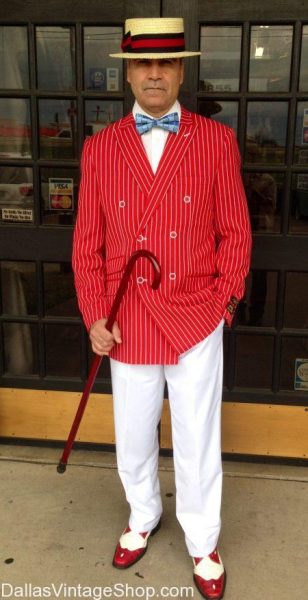
A Barbershop Quartet is a small group that has 4 distinct parts (from highest to lowest): a tenor, a lead, a baritone, and a bass, is performed with and only with 4 vocalists (hence the name ‘quartet’), has no director, and is therefore internally conducted by the singers, and typically features an even blend of tenor, baritone, and bass with an emphasis on the lead vocalist
A Barbershop Chorus, however has the 4 main voice parts (Tenor, Lead, Baritone, Bass), but can also include the female voice parts of soprano and alto creating 6-part harmonies, is performed with 12+ members, generally has a director to give cues and tempo, and has an ideal blend of 40% bass, 30% lead, 20% baritone, and 10% tenor (according to the Barbershop Harmony Society).
While a barbershop chorus heavily resembles a choir, it is differentiated by genre and structure. Often a chorus is the central feature of a barbershop society’s local chapters. From here, quartets often form. This also creates a great source of new singers. If a part of a quartet is ill, retired, or otherwise indisposed, a quartet can pull new members or “spare parts” from the chorus.
But what fills the gap between a barbershop quartet (4 members) and a barbershop chorus (12+ members)? The answer is much more on the nose than it would seem. A ‘VLQ’ or ‘Very Large Quartet’ has 5+ members ideally with 2 people on each vocal part and performs without a director. This enables much more flexibility than a traditional quartet – allowing its members to perform even if someone is missing – while still maintaining the small group feel.
There’s a barbershop group for you no matter your tastes. So whether you’re drawn to the camaraderie of a quartet or the connection of a chorus – barbershop continues to prove itself to be a dynamic and accessible community.
So, You Want to Get Into Barbershop?
Barbershoppers can be found almost anywhere, especially in the U.S., but with Minnesota’s rich musical tradition, I knew I would have to talk with a local barbershop enthusiast. This led me to the Minneapolis Commodores, our local Barbershop Harmony Society chapter and eventually the ‘Just One More!’ quartet, a for-commission group that performs iconic charts, headed up by Nate Weimer. I was fortunate enough to meet with him and discuss his experience with the musical form.
Olivia: How did you discover barbershop music?
Nate: So growing up our high school choir would always have a barbershop quartet for no good reason, as far as I can tell. I remember at being, I don’t know, maybe middle school or something and going to these shows and just hearing this music and it was unlike anything I’d ever heard before. And I was just obsessed with it. I didn’t really learn too much about it until I moved to Minneapolis and joined the Commodores and we had a very talented director named Paul Wiggley, who just knows everything there is to know about barbershop. We learned just so much from having this experienced director. So it’s, I mean, it certainly started early, but it’s something that I continue to learn and the more I do with it, the more I know, and the more I enjoy it.
O: What advice would you have for someone wanting to start their own group?
N: Find people that you like. You know, you’re gonna be spending a lot of time with these people. You should probably be able to harmonize with somebody and kind of hear when you’re in a good ratio with them and like the cord is ringing or whether it’s not. But after that, I mean, there’s all sorts of music out there. You can do simple polecats, you can do more challenging arrangements, but just have fun with it. You know, it’s such a friendly, uh, hobby and, you know, when you go to places with other barbershoppers, especially if you learn your basic polecats, then you can just meet up with any strangers that sing different parts and sing with them. So it’s really a joyful thing.
O: Amazing! Finally: How would you describe the “magic” of barbershopping to someone who has very little experience with it?
N: You know, it’s really exciting. The only way to do it, I think, I mean, you can hear it, but the best way to do it is to sing a tag. And if you go to any barbershop show and you stick around after the show, I can almost guarantee that they’re going to be the singers also sticking around, and if you have a couple minutes to learn this five second tag and then sing it with these three strangers, you’ll feel the vibrations and you’ll experience it firsthand and and I think that’s how a lot of us get hooked.
O: Thank you so much for your time.

